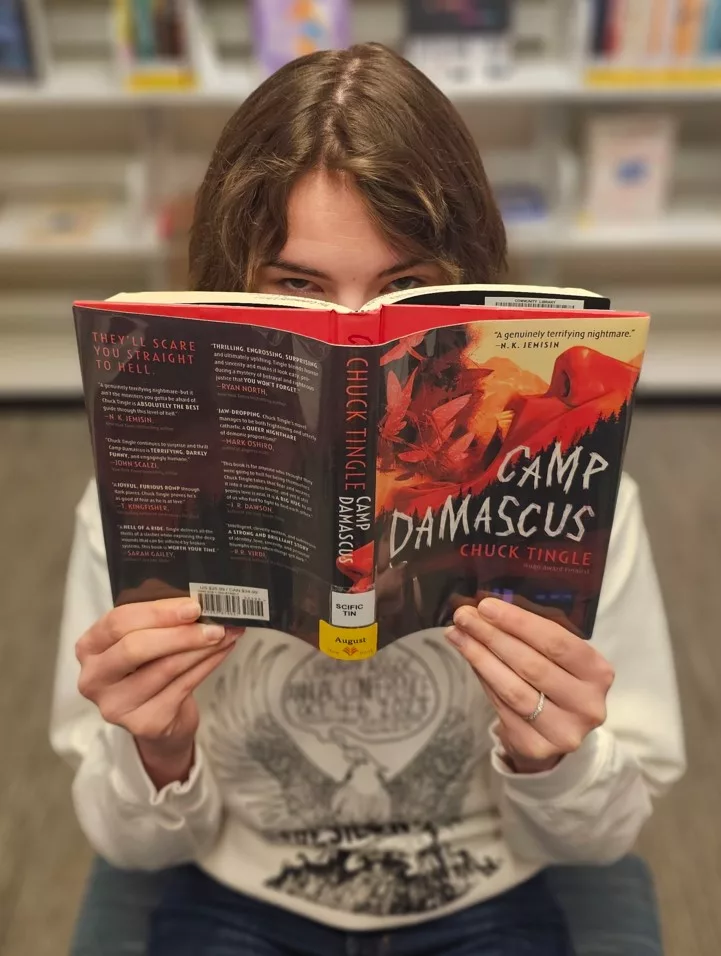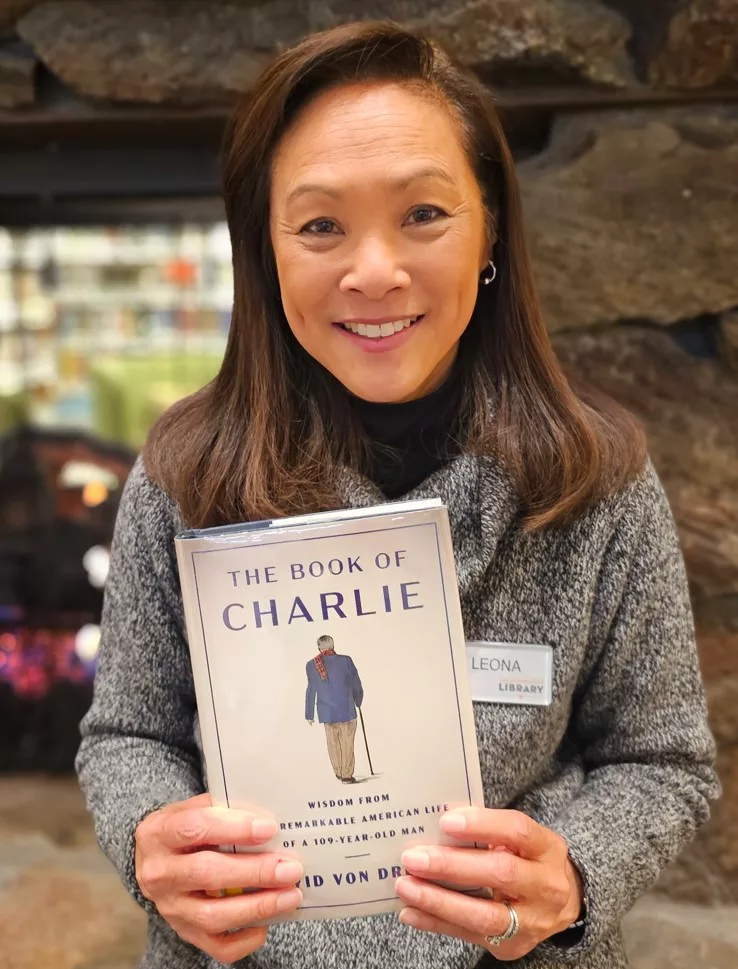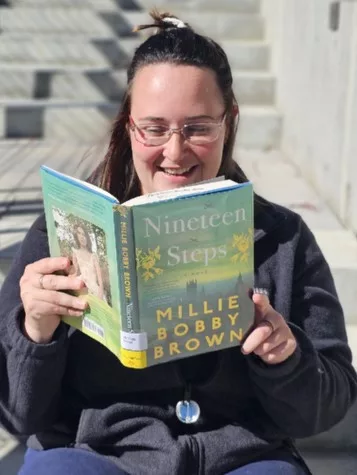Operations Manager Nicole Lichtenberg recommends Camp Damascus by Chuck Tingle.

In Neverton, Montana, in her family’s conservative Christian household, in the liminal period between high school and college, Rose Darling is beginning to find that things aren’t quite lining up. Cautioned against being too enthusiastic about scientific inquiry, Rose tries to just go with it when she vomits insects all over the dining room table. She makes herself believe her father when he says she never had a door, why would she have a door? She sidesteps when her parents ask her how her “date” with a boy went. She does all these things and more, until she can’t.
Camp Damascus is Chuck Tingle’s debut mainstream fiction novel. I listened to this as an audiobook, and I had to go and confirm it was written in standard prose because it seemed so well suited to being read aloud. Tingle explores many themes…
…what it means to have faith, the line between loyalty to family and blind obedience, and the fallout and the freedom of living life on one’s own terms.
There are a lot of books that pathologize or misrepresent autism as an entertaining but deficit-ridden quirk. There are fewer books that depict autism in anyone other than a white boy or man. Camp Damascus, in the spirit of Tingle himself, takes autism in stride as a facet of Rose Darling’s existence. Rose is depicted as a whole person with a whole personality and the plot is clearly defined before the book even mentions autism.
What does it mean for the rest of us to be able to meet and really get to know an autistic protagonist when they aren’t typecast as socially awkward and have their personality traits limited to one or two obsessions and their relationship with that one person who gets it because their cousin/sibling/childhood neighbor is autistic?
It means that we can read about what happens when that person’s parents pay mondo bucks to have them possessed by a homophobic demon.
Content advisory: Body horror, themes of homophobia and parental abuse. Don’t worry, love wins out in the end. Chuck wouldn’t leave us hanging like that.
Camp Damascus is available in print at The Community Library. Find it here.





